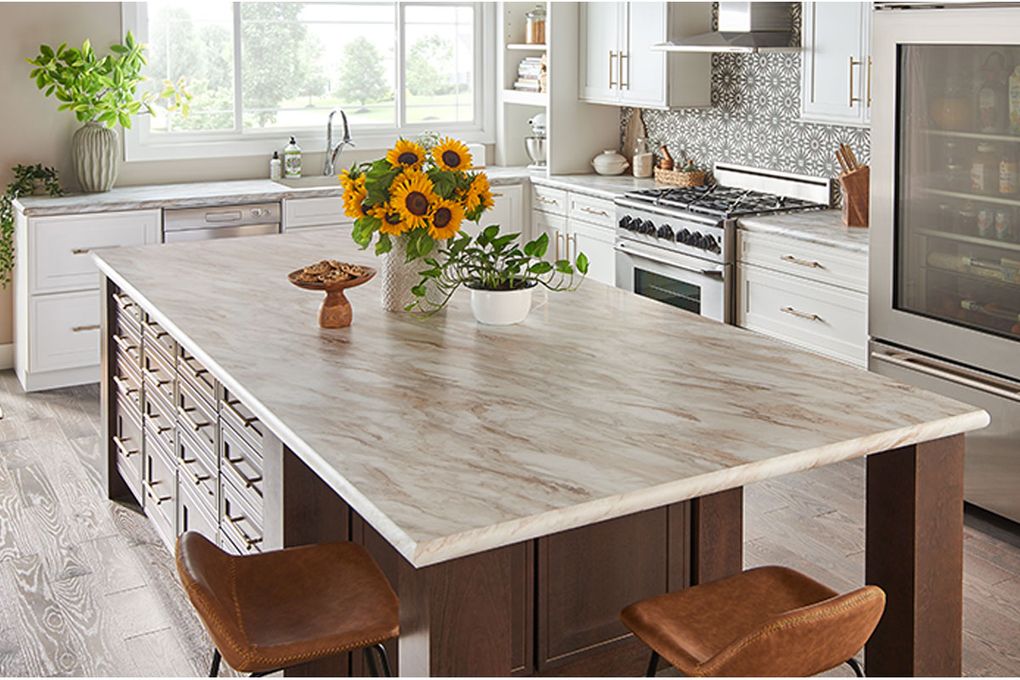Furniture makers accelerate e-commerce options during pandemic
[ad_1]
Prior to 2020, Holland-based furniture maker Haworth Inc. had just one or two team members overseeing the company’s entire e-commerce segment.
“It is almost crazy that it was that few people pre-pandemic, but that’s where demand was for what we were doing at the time and for our approach,” said Paul Nemschoff, Haworth’s vice president of global strategy and marketing.
The COVID-19 pandemic forced Haworth and many of its industry competitors to rethink and retool their approaches to e-commerce. The number of Haworth employees fully dedicated to the company’s e-commerce segment has since ballooned to double digits as the company works to meet the work-from-home needs of both companies and individual professionals.
“We had always said, in 2020, we were going to build a new e-commerce operation, which was absolutely the truth,” Nemschoff said. “The timing got accelerated a bit (because of the pandemic) and, obviously, it has focused much more on home-based work products like chairs, desks, monitor arms. … It was as much an opportunity as it was a challenge.”
The e-commerce race
In 2020, many of Haworth’s initiatives centered on the company’s digital presence. This included everything from an online showroom that allowed the company to display products in the absence of in-person trade shows like NeoCon, to a redesigned website and online store.
These bolstered e-commerce solutions were used much more by Haworth’s business-to-consumer (B2C) side of the business, which directly ships work products to employees’ homes. As Haworth strengthens its e-commerce muscle, Nemschoff said the company sees additional opportunities in the residential space, serving clients within their homes — not just the home office.
“E-commerce is here to stay in Haworth, and it’s not even just maintaining what we have — we have aspirations of growing it and growing it substantially,” Nemschoff said.
“We’re going to continue to expand past the office,” he added. “We believe we have an opportunity to influence how people live and dine and work and go outside and everything else. The neat thing about it is that we believe we have great products that can do all of that.”
Grand Rapids-based contract furniture manufacturer Steelcase Inc. has deeper roots in e-commerce, making the pandemic transition a little more seamless, albeit still far from easy. Steelcase has used e-commerce since 2000, initially for its contract clients. This included an online catalog of products connected to each company’s respective procurement system, enabling streamlined day-to-day purchasing.
It wasn’t until 2006 when the company launched its direct-to-consumer online store.
“Admittedly — at least from our strategy being a little more focused on leading enterprises — I would say our consumer business was not a strategic part of our business until the pandemic,” said Rob Poel, general manager of Steelcase’s consumers business. “It was a nice profitable side business and it enabled the simple purchasing of products for those with simpler needs.
“As the pandemic hit, as probably happened with our peers, when we went from 5 percent working from home to 95 percent working from home, our consumer volume just skyrocketed.”
Like Haworth, Steelcase made significant investments in both talent and technology to create a more personalized experience for both B2B and B2C clients.
This included tailored work-from-home programs for contract clients who were able to leverage their contracts for lower pricing while making it easy for their employees to order Steelcase products for their at-home workspaces.
Steelcase also launched a chat feature within its online store and carried out other customer experience enhancements.
Unlike Haworth, though, Steelcase isn’t necessarily leaning into supplying other areas of the home, but the company has found some opportunities in adjacent market segments.
“The home office is the other side of the hybrid coin,” Poel said. “We’re probably still focused on home office and performance products in the home office. However, there are some really adjacent markets to that. Gaming is one of them, or a broader creator market — DIYers, day traders. … Thus far, we’re not going too broadly into the home.”
Filling the gaps
Herman Miller Inc., which merged with competitor Knoll Inc. during the pandemic to form MillerKnoll Inc., is another large furniture company that already had an e-commerce infrastructure in place. The Zeeland-based furniture maker acquired furniture retailer Design Within Reach in 2014 for $154 million, establishing a strong foothold in the retail segment of the market.
Those in-house e-commerce capabilities helped MillerKnoll to address the needs of clients during the pandemic, knowing the best ways to package and ship directly to clients that might live anywhere from New York City to rural settings in middle America.
“As a company that has been doing in-home deliveries in this space to a retail consumer for many years, these are challenges that we solved before,” said Frank DeMaria, MillerKnoll’s vice president of digital engineering and platforms.
MillerKnoll offers three types of shipping for purchases. Aside from standard shipping, the company offers threshold shipping in addition to its white glove delivery service, which includes assembly.
Before the merger, Herman Miller also noticed a gap between B2B and B2C segments — one that trapped small and mid-size businesses whose needs differed from those of a large corporate client and traditional consumers.
In an effort to properly serve that segment during the pandemic, the company launched Herman Miller Professional, an e-commerce solution friendlier to smaller businesses.
“We’ve had traditional B2C models and B2B models for many years, but ultimately there have been some gaps of what’s in between,” DeMaria said. “We did try to fill some of that white space throughout the pandemic.”
[ad_2]
Source link




:max_bytes(150000):strip_icc()/GettyImages-559025517-2000-b3bece30a9074ec3958a4d39f69f2a79.jpg)


